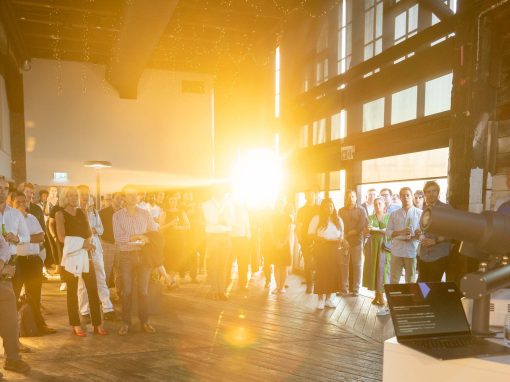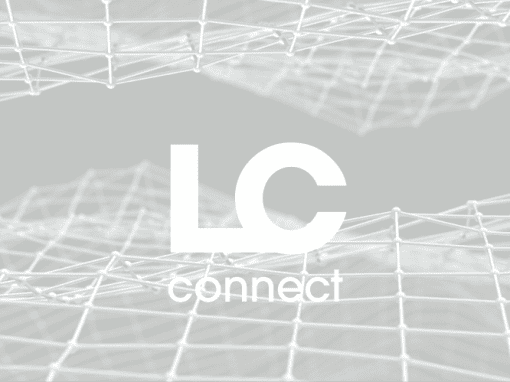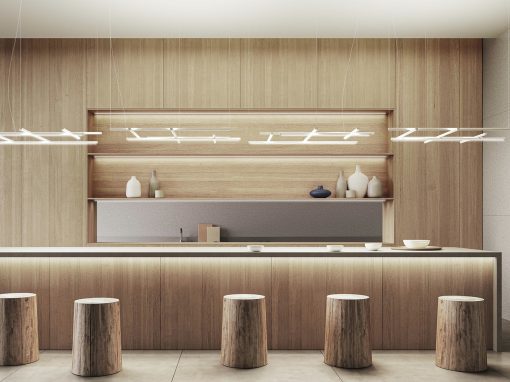Floodlights are diverse luminaires that offer directed illumination for several applications. When you think of floodlights, you probably picture a bright football stadium with intense, uncomfortable lighting, however, floodlights have many other useful applications.
Knowing how to properly incorporate floodlights into a lighting design to achieve the desired illumination effect is important. Floodlights are ideal for lighting situations where the main focus is to accent or highlight architectural elements.
For Every Project
Floodlights come in all shapes and sizes, with a variety of intensities, distributions, colour temperatures, accessories, and other customisable options. When designing with floodlights, it is important to determine what the desired effect is so you can pick the best floodlights for the project. With mounting accessories and optical control options, floodlights can be customised to meet the lighting requirements of any project.
To differentiate between small- and large-scale styles you should look at the floodlight’s lumen output and fixture size. Small-scale floodlights usually have lumen outputs of less than 7,500 lumens and are under 30 cm inches in size. Large-scale floodlights, over 30cm in diameter can deliver up to 50,000 lumens and beyond.



Small Scale Floodlights
Within the small-scale floodlight group, there are many styles and sizes, with the option of very narrow, narrow, wide beam or asymmetric distributions. Each lighting distribution is meant for certain applications, and not every distribution will be right for all lighting scenarios. Narrow and very narrow beam distributions are commonly used for illuminating something that is a distance away, while wide beams are used for up-close illumination.
Because of their ability to direct light on a very specific area, small-scale floodlights with very narrow beam distributions are ideal for highlighting unique architectural features. “Up-lighting” is a popular technique associated with this distribution and is used to illuminate elements of a façade and bring attention to the height and symmetry of the structure while creating interesting patterns of light. Because of their compact design, these floodlights work best on one- or two-story buildings. Taller structures will require higher-performing floodlights.
Small-scale floodlights with narrow beams might be used for illuminating a sign with a uniform distribution of light. This would be achieved by mounting floodlights on a pole a distance away from the sign, to create a strong, even illumination. Other common applications might include highlighting trees to add dimension to a space and draw attention to features.
Finally, small-scale floodlights with wide beams are the perfect solution for creating general illumination in courtyards, walkways, and other outdoor areas; this general illumination is usually achieved via pole or building mounted fixtures. This distribution is also used for wall washing and façade illumination.

Large Scale Floodlights
Large-scale floodlights are used when a very high light output is required. These high-performance floodlights are available in very narrow, narrow, wide beam and asymmetric distributions.
High-performance floodlights with narrow or very narrow beams should be used when the goal is to illuminate something far away or graze something very tall. The further away the floodlight is from the element it is highlighting, the higher the light intensity required.
When the application requires a flat, even distribution of light that spans across a façade, a wide-beam floodlight could be a good option. Depending on the architecture and design, you can also use a linear spread distribution to light a wall uniformly.

Façade Floodlights
Façade floodlights are specifically designed for the illumination of building façades. They are available in narrow, wide and asymmetric distributions. They can be used for general façade washing or grazing, or to create interesting patterns and highlight architectural features.
To accent the unique texture of a surface, such as an uneven stone façade, a grazing technique would be used utilising a narrow beam angle. To more evenly illuminate the surface of a façade, a washing technique would be used with a wide or asymmetric beam angle because it creates a more uniform distribution and does not bring out texture or details.

Mounting Accessories
In addition to the wide variety of scales, distributions, intensities, and colour temperature options, floodlights are most often available with multiple mounting and optical control options, to ensure a perfect, customised fixture for your application.
When using floodlights to highlight and illuminate your project, it is important to choose the best mounting accessory for your design. Whatever your floodlighting goal is, there is likely a mounting accessory to achieve it. Some common mounting accessories include pole couplers, earth spikes and cross beams.

Pole Couplers
Pole couplers are a popular mounting accessory that allows for easy installation onto existing poles in the field. This is a great option when using small-scale floodlights to create general illumination in an outdoor space.

Earth Spikes
Earth spikes allow for mounting into grass or dirt. They are used for installation in landscaped areas, to illuminate signage around a site or to highlight key features of the landscaping.

Cross Beams
Cross beams are an excellent accessory when multiple large-scale floodlights require mounting. Cross beams can be mounted on walls, under ceilings, or on the ground (using anchorage kits). This accessory might be used for illuminating large buildings
In-grounds as floodlights
Even with dozens of mounting accessories available to attach floodlights to a variety of surfaces, sometimes a site requires the luminaire to be completely recessed which may lead you to specify an in-ground. While in-grounds are often grouped separately from floodlights, their primary performance and purpose is often the same as a traditional floodlight and they can be used to light many of the same features.
In-grounds should be considered when pedestrian traffic will occur where a floodlight needs to be installed or when there is a desire to hide a luminaire that might obstruct the appearance or effect of a focal point. Common applications of floodlighting using in-grounds includes lighting building facades, flag poles, trees, and signage.

Optical Control Accessories
When incorporating floodlights into your lighting design, it is helpful to be familiar with the various optical control options. These accessories are helpful when further customisation of the beam angle or glare control of your floodlight is required. Depending on the design of a luminaire, additional glare control is not always needed, but for installation in certain areas, it is a common safety precaution.

Spread Lenses
Spread lenses are a useful optical control option that allows you to alter the distribution of a floodlight. A round spread lens is designed to widen a symmetric beam distribution. An elliptical spread lens is designed to widen the beam in one direction for than the other to create an asymmetric distribution.

Glare Shields
Glare shields are external to the luminaire and are effective floodlight accessories that are designed to reduce glare and limit spill light. Reducing glare in your lighting design is important for creating a safe and comfortable lighting experience.

Louvres
Louvres are an internal optical control option that can be used to prevent glare by eliminating a direct view of the light source, protecting anyone who might be walking or driving by.
BEGA Floodlights

84 259
Floodlight with mounting box for permanent installation for the illumination of objects, plants and building details in private areas.

84 758
Floodlights with asymmetrical light distribution for the illumination of façades or trees from the ground. These luminaires are an alternative both to in-ground luminaires – due to the significantly less installation work required – and to floodlights with freely accessible adjustability.

84 256
BEGA surface floodlights for asymmetrical wide beam light distribution. Compact, efficient and available in two different housing sizes with highly efficient BEGA LED modules and a luminaire luminous flux of more than 2600 lumens.

84 967
Projected logos, images or text create particularly informative and visual effects in lighting scenarios. As a mount for Graphical Optical Blackout masks – Gobo masks for short – they are ideal lighting tools for presentations and highlight individually created displays both reliably and efficiently.
Mounting Accessories

71 211 Cross Beam
For the arrangement of multiple BEGA high-performance floodlights on walls, surfaces, supporting structures and under ceilings. When mounting on ground surfaces, they can either be mounted on a foundation or on two anchorage units. The maximum number of floodlights that can be mounted depends on the type of floodlight.

70 391 Cross Beam
For the permanent installation of high-performance floodlights on poles Ø ≥ 76 mm.

70 762 Pole Top Mount
Ready-to-install pole tops for multiple configurations of BEGA high-performance floodlights on a BEGA steel luminaire pole




